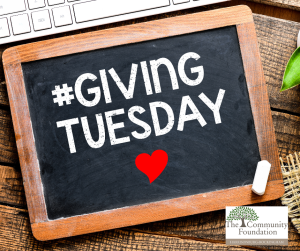Intentional philanthropy is critical in a downturn
Intentional philanthropy is critical in a downturn
Your family may be among those who are taking their charitable giving budgets more seriously this year, given the stock market’s challenges, rising interest rates, economic concerns, and anticipated cash crunches.
At the same time, not surprisingly, community needs tend to rise during uncertain economic times. As 2023 gets into full swing, inflation, housing challenges, and economic uncertainty are pressuring people who are already vulnerable due to financial insecurity, illness, or disability. Nonprofit organizations serving these populations need additional resources—and even more support from charitable giving—to meet the escalating demands.
A budget has benefits
Here are a few steps to consider in building a 2023 budget for charitable donations that can help you continue to support your favorite causes and remain fiscally cautious.
–Review all your charitable donations from the last three years and compile totals for each organization. This can be an easy exercise for people who use a donor-advised fund at The Community Foundation because the data can typically be pulled directly from TCFHR’s donor portal or requested from TCFHR’s team.
–Carefully review the list of organizations you’ve supported over the last three years. Regardless of your donation levels, which are the most important to you? Are you serving on the board of directors of any of these organizations? Do you regularly volunteer at any of them? Is there a personal connection?
–Are there any organizations on your list that you supported primarily because the organization was raising money for a capital campaign, or because you were helping out a friend who is involved with that organization? These may be organizations to possibly put on hold and then revisit supporting in future years when the economy picks back up.
–Add up your total giving over the last three years and then divide it by three to get your average. Is that number doable this year? If not, reduce it to a level that fits within your financial situation to arrive at your tentative 2023 giving budget. Remember to consider the value of publicly-traded stock gifts you could make this year if preserving cash is a priority.
–Consider whether to keep certain organizations at historic levels of giving, such as those you’re personally involved with. Or on the flip side, you may decide to temporarily reduce your level of giving to organizations for which you are providing other types of support, including volunteering or board service.
–Review the list to see if there are any organizations you’ve supported that you’d like to learn more about. The team at TCFHR is extremely knowledgeable about nonprofits in our region and would be happy to provide information on how a particular organization spends its money and how it measures impact.
–Finally, do the best you can to set targets for the amount of support you’d like to provide to each organization—and perhaps even set targets for the timing of your gifts. You can change these targets at any time, of course. The point here is that the planning and budgeting process is a great way to create more intentionality around your giving. Intentional giving is not only more rewarding for you but is also likely to increase your level of engagement with the recipient charities and enhance your understanding of how dollars are being deployed to meet the mission. This, in turn, helps your favorite organizations get better at carrying out their programs and serving those who rely on their work.
Consider taking a year-long view of your giving
As compelling as year-end giving may be, perhaps even more compelling are the reasons for planning and launching a charitable giving strategy early in the year, starting with January. Benefits of a year-long giving strategy include:
–Helping nonprofit organizations meet their budgets all year long, which can save them from worrying as much about whether constituents’ ongoing needs can be addressed.
–Leveraging employer matching gifts programs early in the year when dollars are available and there is plenty of time to process the paperwork.
–Increasing predictability of cash flow and therefore being proactive, not reactive, in supporting the causes you love. You might even consider setting up automatic contributions to a donor-advised or other type of fund at TCFHR by working with your financial advisor to formalize this component as part of your ongoing plan.
–Taking advantage of plenty of time to learn more about the charities you plan to support so that you can be an even more informed and impactful donor, including fully utilizing TCFHR’s expertise and resources.
–Giving yourself time to include children and grandchildren in the charitable giving conversation as a learning experience for the whole family.
–If you are over 70 ½, being able to avoid the year-end scramble to process a Qualified Charitable Distribution (QCD) from your IRA directly to an eligible charity by executing a QCD in the first quarter.
–Leaving enough time to explore options for more complex giving tools that might provide tax benefits as well as meet your charitable goals, rather than waiting until the last minute when it may be hard to get on the calendars of your attorney, financial advisor, and accountant to map out the best strategy for your situation.
As always, TCFHR is here to help. Please reach out to our team to learn more about how you can make the biggest difference with your charitable dollars, including how you can use an existing or new donor-advised fund, or other type of fund, to carry out your 2023 charitable wishes. You’ll be glad you planned ahead to help your favorite organizations fulfill their missions throughout the entire year, as well as maximizing your own tax benefits and avoiding December’s crunch time.
Call us at 540-432-3863 or email Kristin Coleman at [email protected].





















